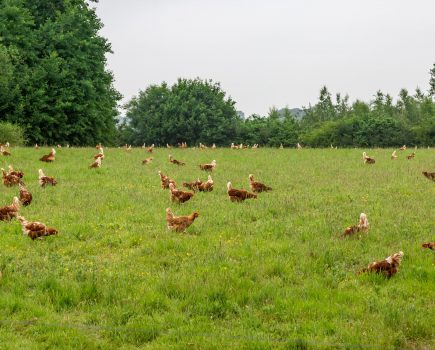Many skeletal growth problems in chickens are nutritional in origin, so check that birds are getting the correct diet for the age of the birds and stage of production. Other conditions are inherited, so choosing breeding stock carefully is important.
Claw and spur management
Claws and spurs should be kept filed smooth and to normal shape. Hens which are free-range will normally keep their claws in good shape due to the incessant scratching they do. Cockerels can break the feathers or cut the flanks of their hens when breeding if their claws are too long or if the spurs are sharp and angled inwards. Do not cut spurs as they have a good blood supply.
Lameness
This may be due to arthritis in old birds or inflammation in the kidneys (the leg nerves pass through the kidneys) or a heavy worm burden, so treating with Flubenvet 3-4 times a year is beneficial.
As chickens get to puberty (point of lay) Marek’s disease can show symptoms of lameness. If chickens have been regularly wormed, a diagnosis via post mortem is needed which may lead to vaccination of future hatches.
Hock swelling and infection may be caused by Mycoplasma synoviae and needs treating with a suitable antibiotic.
Kidney failure results in the deposit of urates (the form of bird urine) in the viscera (gut area) or the joints and can be caused by toxic substances e.g. rhubarb leaves.
Rarely, a bird will sprain a ligament in a leg. They are more usually lame through disease and it is always worth treating lameness as such with medication, as if left without treatment to get better as in a sprain, the disease will only get worse and possibly beyond treatment.
Fractures
Rare in poultry which are properly fed and most simple leg or wing fractures caused by trauma can be pinned by a vet. Bones take about four weeks to heal in chickens, but bandages should not be applied for this length of time as the joints will irreversibly seize up. Fractures elsewhere may be impossible to mend and certainly expensive.
Splay leg
Chickens may be hatched with or develop one or both legs splayed outwards. This may be due to a slippery surface in the incubator or brooder, nutritional deficiency of the parents causing weak tendons or incorrect incubation temperature. In mild cases the legs may be tied together with soft wool for two or three days to allow the tendons to strengthen, but if this does not work the bird should be culled as it will be unable to walk.
Deformities
Common inherited deformities deserving culling are roach back (an upward bend in the spine), wry tail (permanent sideways tilt), cow hocks (inward angling of the hocks) or rickets (outward bending of the legs caused by an imbalance of minerals). Inwardly bent toes may be inherited or may be due to incorrect incubator temperature – either cull anyway, or if the bird is from a valuable strain, breed from it and see if its progeny have the same deformity. A breastbone bent vertically (dented) may be from too narrow perches too young, but if it is bent sideways (‘S’ bend) then it is likely to be inherited and should not be bred from.
Body condition score
This is very important to check regularly by handling as the outline of feathers does not change if chickens are thin or fat. Obesity will prevent laying and may damage joints. The pin bones either side of the vent indicate the fat coverage, if sharp, little fat, if well covered, probably too much.







